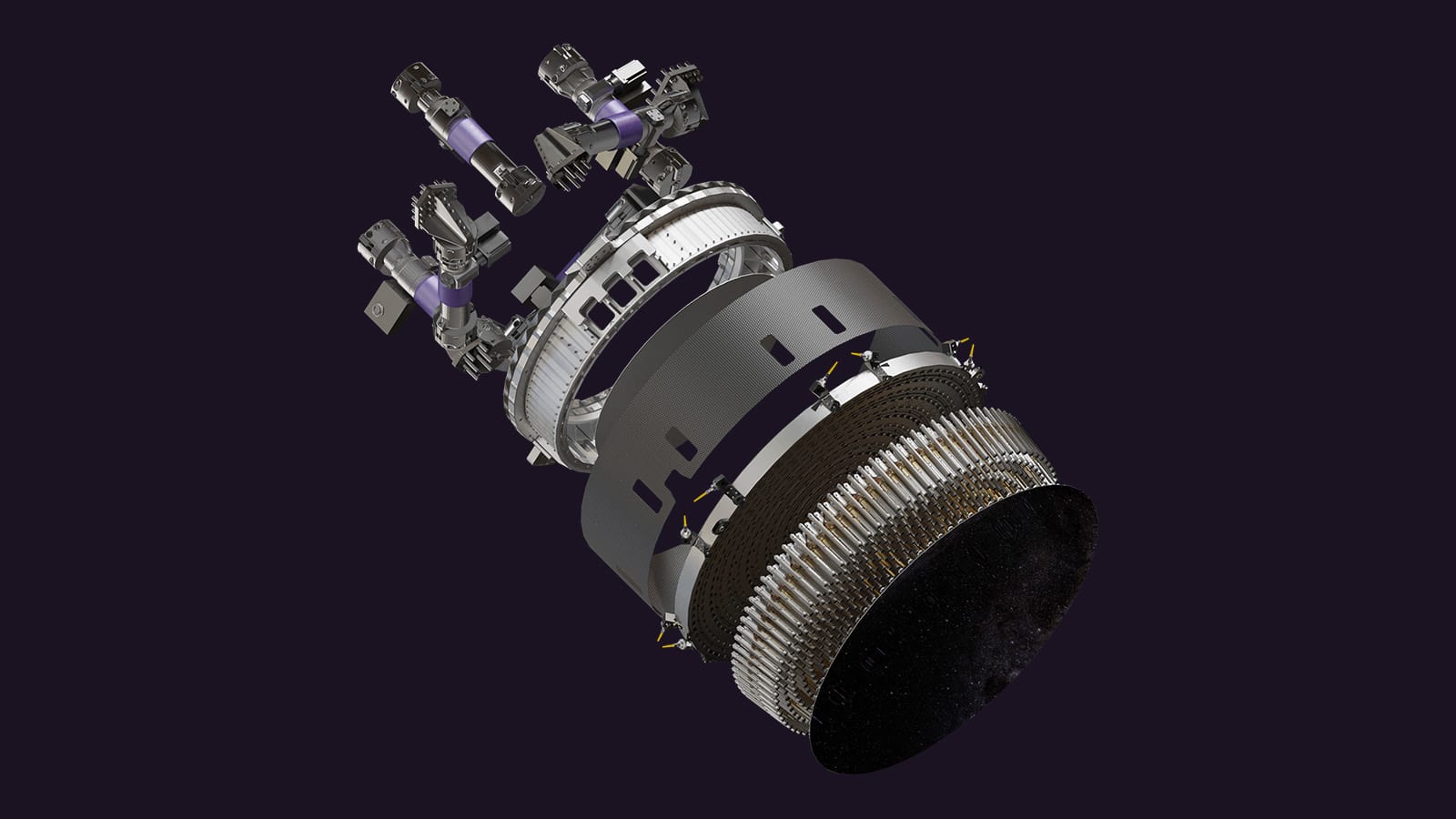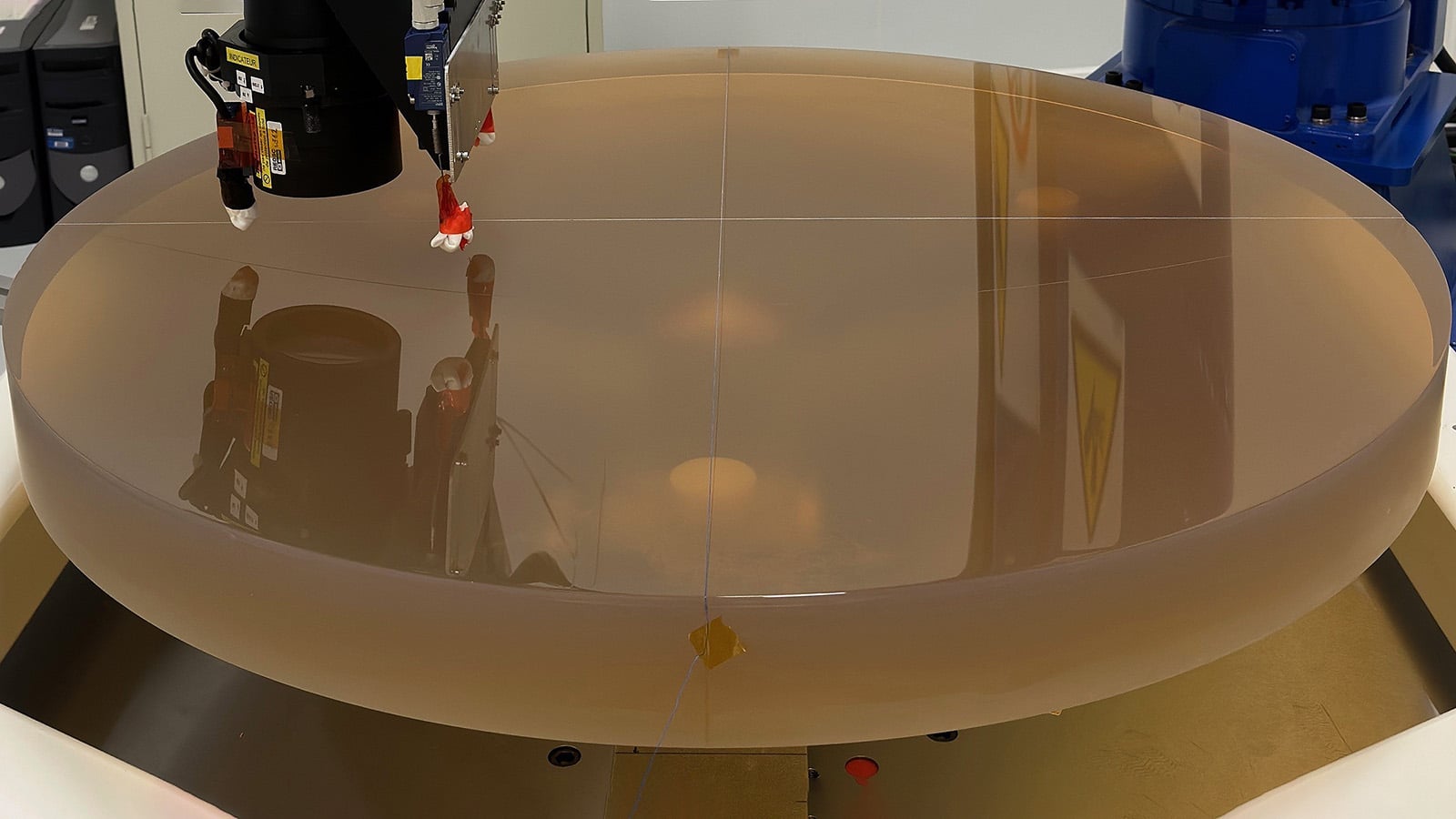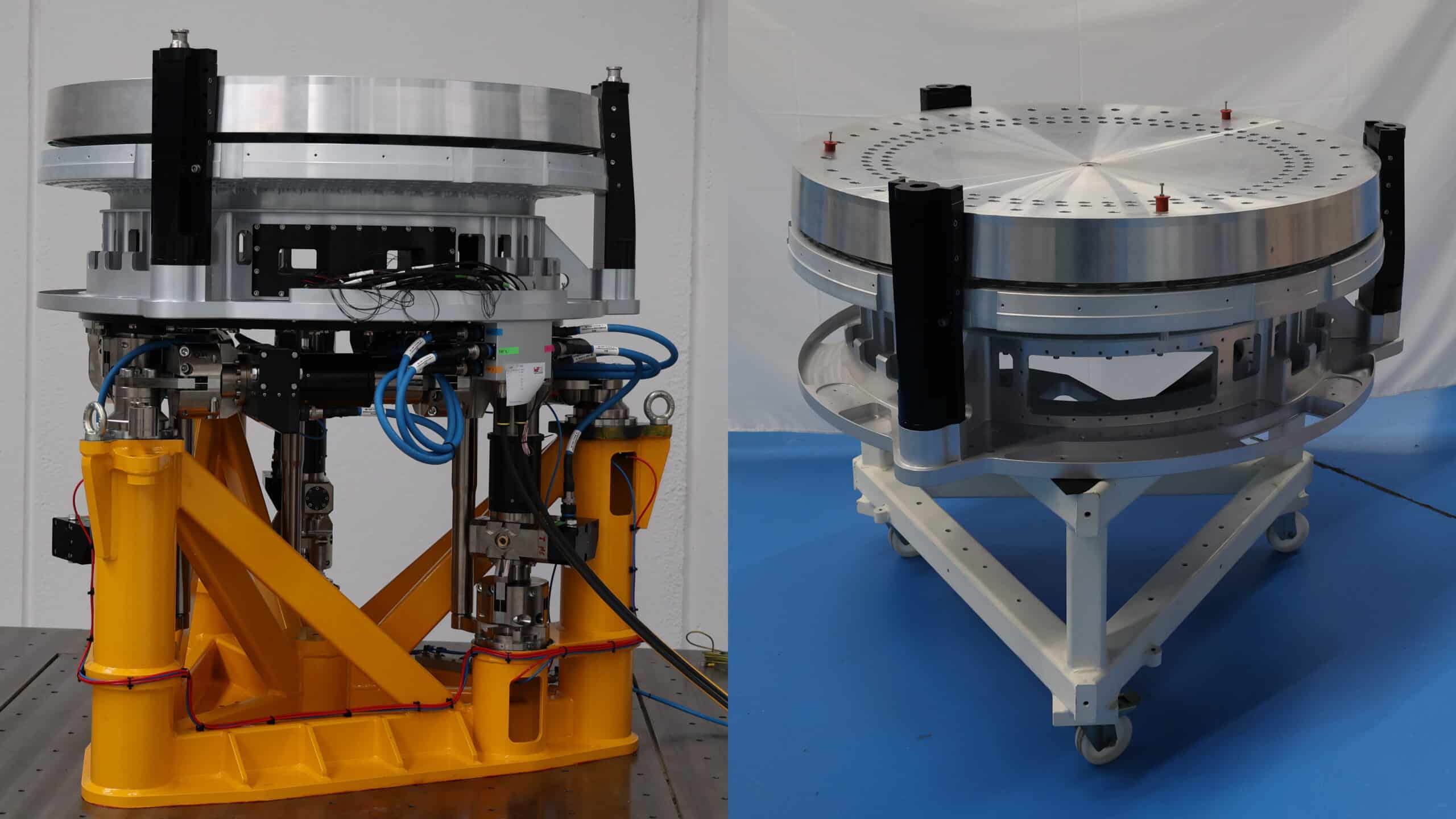Fourth-Generation Technology Will Change the Future of Ground-Based Observing

The Giant Magellan Telescope’s adaptive secondary mirrors are being built to counteract the natural blurring effect of the Earth’s atmosphere.
When you look up at the sky on a dark night, you’ll notice that the stars appear to twinkle. As light passes through Earth’s atmosphere, it is distorted by turbulence, creating a twinkling effect from our perspective. Each stream of starlight is refracted by changes in temperature and density in the atmosphere. Similar to the effect of looking up through the surface when underwater in a swimming pool, light from stars seen through our atmosphere—whether by a telescope or with the naked eye—appears to twinkle and jump around.
Some locations are better than others for viewing the sky. Locations at high altitudes with stable climates, low humidity and cloud cover, and dark skies (low light pollution from manmade lights) make the best sites for telescopes. The site of the Giant Magellan Telescope, atop Las Campanas Peak in Chile’s Atacama Desert, is among the best in the world. The Las Campanas Observatory is at an altitude of almost 8,500 feet, in a remote location, in a low humidity desert. It is one of the best sites for a telescope in the world. However, we cannot overcome atmospheric turbulence from the ground through location alone.
In parallel with advances in computer technologies in the 1990s, engineers have been developing the optical technologies used to counteract this natural blurring effect that’s been such a problem for astronomers. Enter adaptive optics, an astronomer’s “magic wand” for correcting the optical influence of the atmosphere. Atmospheric adaptive optics and ground-layer adaptive optics instruments work to counteract the distortions caused by ground-layer turbulence.
Making the Atmosphere Disappear
Frank Groark, deputy optics and optical metrology manager for the Giant Magellan Telescope, explains that “when measuring atmospheric turbulence, adaptive secondary mirrors implement the opposite distortion till the reflected starlight is perfectly corrected.” Building on the technology used at the Magellan Telescopes at Las Campanas Observatory in Chile and the Large Binocular Telescope in Arizona, the Giant Magellan Telescope will employ the fourth-generation design of what’s known as adaptive secondary mirrors (ASMs), which are sophisticated hardware that put into action the technology and techniques encompassed by adaptive optics. The ASMs put into action the corrections determined from wavefront sensors, computers, and sophisticated algorithms, changing shape thousands of times per second using over 600 magnetic actuators, counteracting atmospheric turbulence in real time.

“These optical technologies do things that I wouldn’t have thought was ever possible twenty years ago,” shared Frank. Before ASM technology, astronomers had to rely solely on natural seeing with ground-based telescopes. Today, deformable mirrors are the most widely used technology in wavefront shaping applications for adaptive optics. The Giant Magellan Telescope has seven ASMs that hang above seven 8.4-meter primary mirrors, reflecting light back down to the focal plane of the telescope.
Each ASM is paired and aligned with one of the giant primary mirrors and is responsible for receiving the distorted light reflected from its corresponding primary mirror. With adaptive optics in the secondary mirrors, only two reflections are required to reach the focal plane with these corrections applied. These mirrors deform their surface at a rapid rate (2,000 times per second) refining the light before sending it to the telescope’s scientific instruments in the form of a concentrated beam to be analyzed.
Just as the telescope’s primary mirrors are exceptional (the largest mirrors made anywhere today), the ASMs are also exceptional—made using especially thin glass surfaces. Their reflective surface, known as a “thin shell face sheet,” is extremely flexible because of its 1.05-meter diameter and 2-millimeter thickness, the thickness of a nickel. The thin shell face sheet is made of Zerodur, a structurally stable, glass-ceramic material that is extremely insensitive to thermal changes. The thin shell face sheet will undergo polishing for approximately one year to reach the desired parabolic shape. Magnets are then adhered to the mirror frame, leaving a gap of 150 microns (equivalent to a sheet of paper) between the mirror’s back surface and its frame. Hovering unattached, the thin shell face sheet can deform as directed by the 675 independently controlled voice coil actuators in the frame.
Progress on Optical Technologies



The Giant Magellan Telescope’s first off axis ASM is currently in production with company called AdOptica, a renowned telescope and astronomical instruments design consortium. Following a manufacturing readiness review last year, a subscale Zerodur and full-scale nylon prototype demonstrated the machining process for fabrication. AdOptica’s subcontractor and leader in high performance optomechanical systems, Safran-Reosc, is producing the thin shell face sheet, and the polishing and testing of the concave optical surface is complete. Thinning operations are underway and are approaching the specified 2 mm thickness.
Manufacturing of the reference body has been completed by the University of Arizona and the Korea Research Institute of Standards and Science (KRISS) in South Korea. The monolithic Zerodur blank has been machined to produce the lightweight, pocketed, structure. With construction and inspection of the main structural components finalized, the first of seven ASMs for the Giant Magellan Telescope is anticipated to be completed next year.

With ASM technology, the optical clarity in next generation ground-based telescopes will surpass even that of space telescopes. The extremely large, segmented telescope will advance the future of ground-based optical infrared astronomy well beyond the capabilities of existing 10-meter class telescopes thanks to its ground layer adaptive optics over a full field of view—the widest field of view in the 30-meter class. This enables the telescope to see fainter objects with unrivaled resolution and sensitivity, more than 50 million times the light gathering power of the human eye.
These pivotal technologies allow for precise measurements of distances, dynamics, chemistry, and masses of celestial objects in deep space, expanding humanity’s reach in the search for life.
Learn more about the Giant Magellan Telescope’s adaptive secondary mirrors here.
